Atmospheric Refraction
Key Notes:
What is Atmospheric Refraction?
- Atmospheric refraction is the bending of light as it passes through different layers of Earth’s atmosphere, which have varying densities.
- The Earth’s atmosphere has different layers with different densities, causing light to bend (refract) as it enters or moves through these layers.
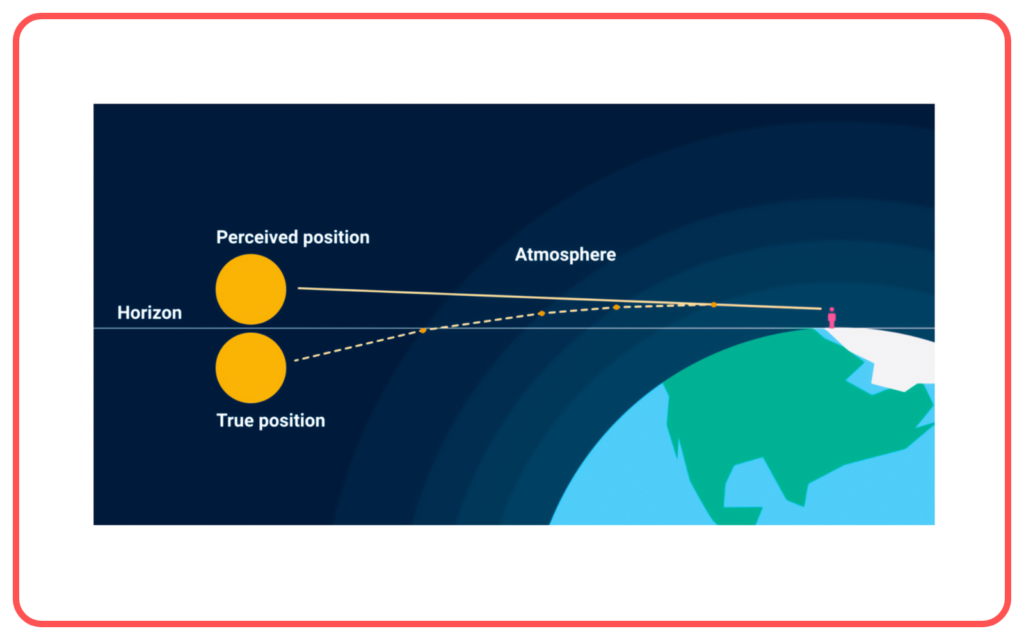
- This bending is responsible for phenomena like the apparent shift in the position of stars or the rising and setting of the Sun.
Why Does Atmospheric Refraction Occur?
- Density of Air: Air is denser near the Earth’s surface and less dense as altitude increases.

- Change in Speed of Light: Light changes speed when moving from one medium (like air) to another with a different density, causing it to bend:
- When light moves from less dense air (higher altitude) to denser air (closer to the ground), it slows down and bends towards the normal (an imaginary line perpendicular to the surface).
- When light moves from denser air to less dense air, it speeds up and bends away from the normal.
Effects of Atmospheric Refraction
- Twinkling of Stars: Stars appear to twinkle because of the atmospheric refraction, as starlight is bent through different layers of the atmosphere, causing brightness changes.
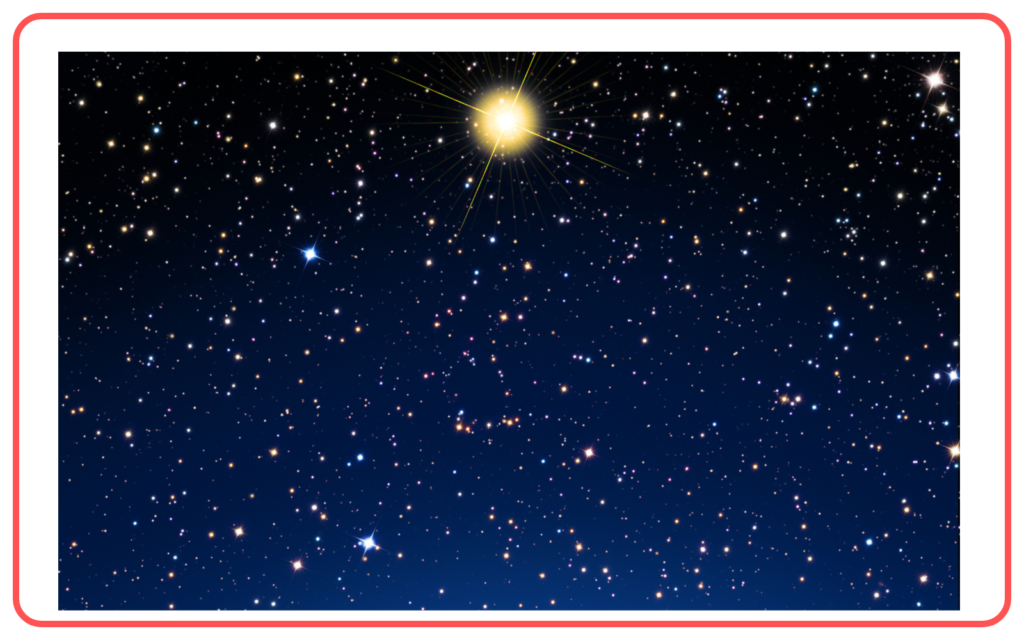
- Apparent Position of the Sun: Due to atmospheric refraction, the Sun appears slightly above the horizon even after it has set. This is why we see the Sun for a short time after it has actually set or before it rises.
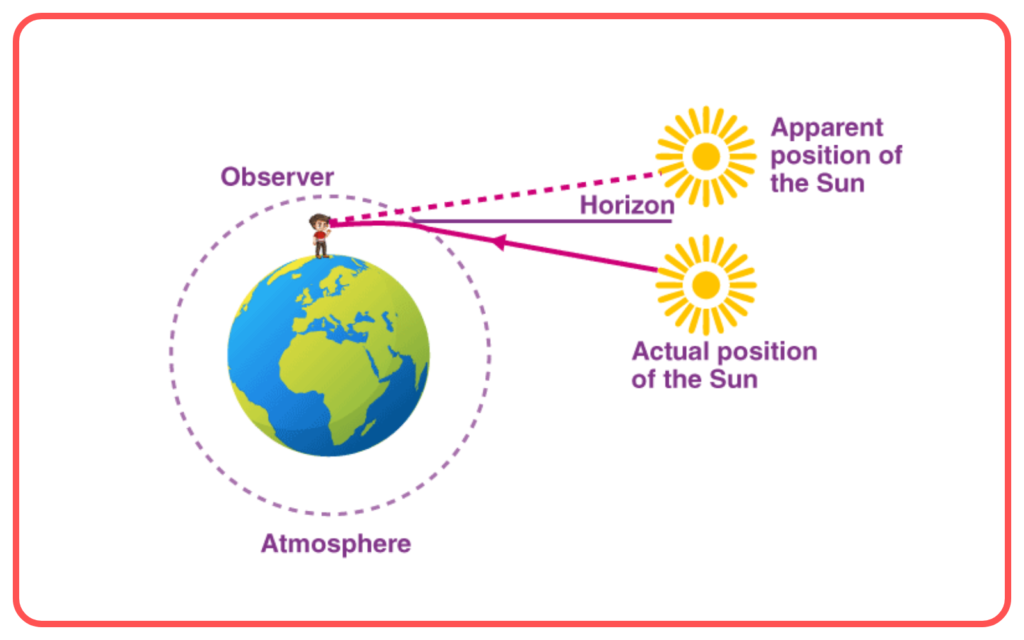
- Red and Orange Sunsets: During sunset or sunrise, the Sun’s light travels through a thicker layer of the atmosphere, causing shorter wavelengths (blue and violet) to scatter. This leaves longer wavelengths (red, orange) to dominate, giving the Sun its reddish-orange color.
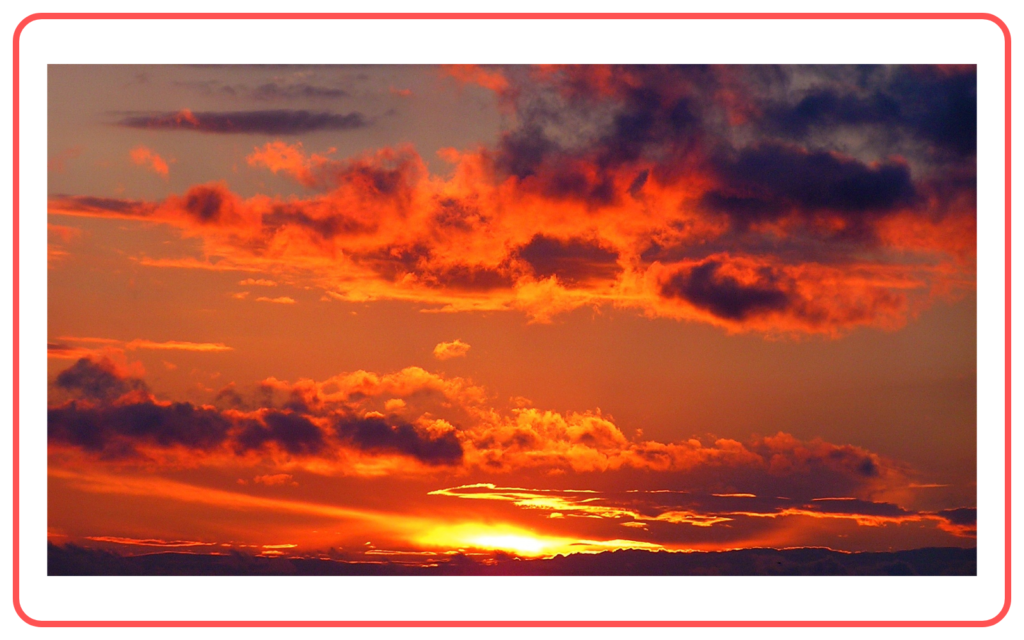
- Mirage: A mirage is an optical illusion caused by atmospheric refraction, where you may see water or distant objects appearing to float in the air. This occurs due to temperature differences between the ground and the air above it, which bends light.
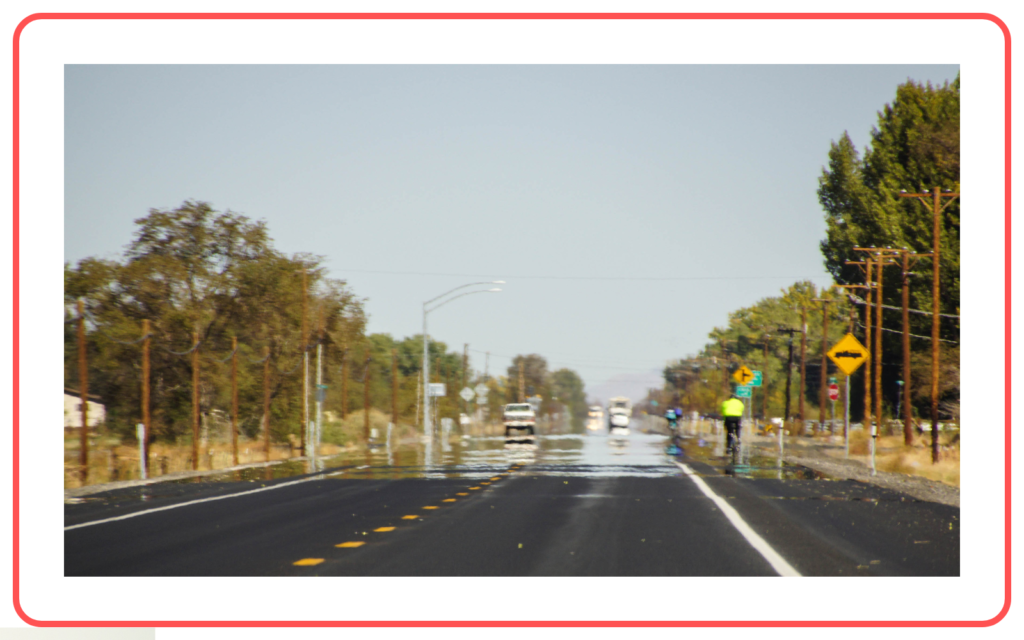
Laws of Refraction
- First Law of Refraction (Snell’s Law): When light passes from one medium to another, the ratio of the sine of the angle of incidence to the sine of the angle of refraction is constant.

- i = Angle of incidence
- r = Angle of refraction
- v₁ and v₂ = Speeds of light in the two media.
- Critical Angle: The critical angle is the angle of incidence beyond which total internal reflection occurs. If the angle of incidence is greater than the critical angle, light is completely reflected inside the denser medium.
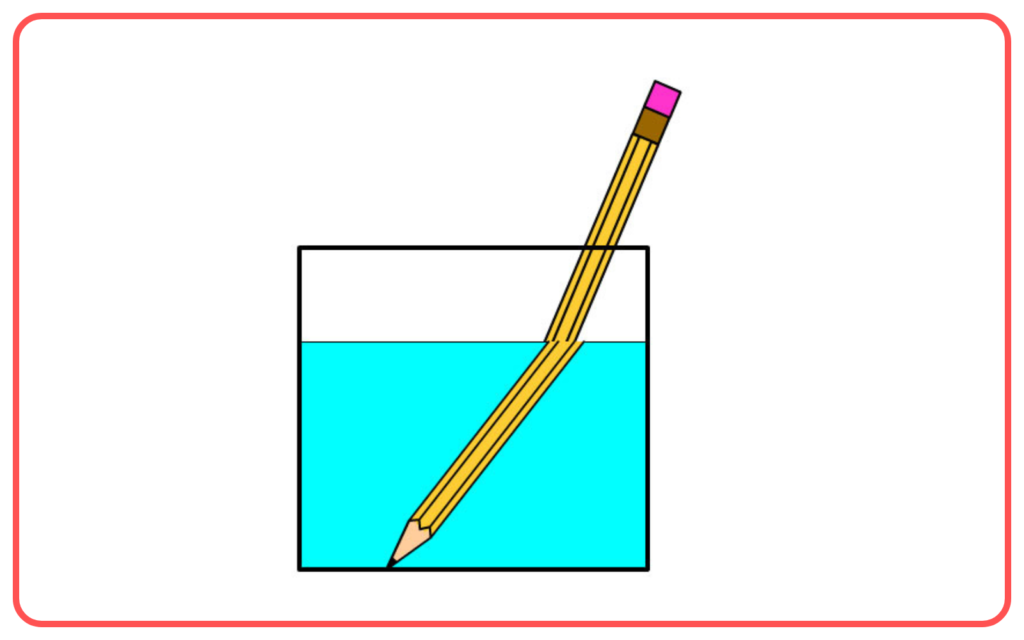
Applications of Atmospheric Refraction
- Twinkling of Stars: Helps explain why stars seem to change brightness and color.

- Navigation: Atmospheric refraction affects the apparent position of stars, used for navigation.
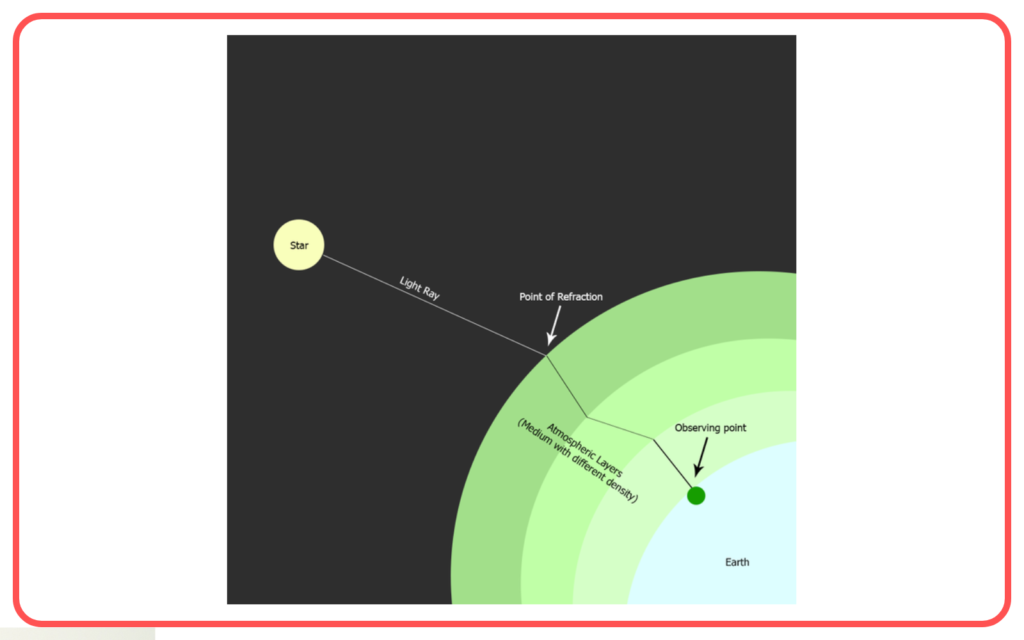
- Mirages: Atmospheric refraction creates optical illusions of water or other objects that are not physically present.

Conclusion:
- Atmospheric refraction is a phenomenon that affects how we observe the sky, stars, and even the Sun’s position.
- It is a result of the bending of light due to changes in the air’s density as light moves through different layers of the atmosphere.
Let’s practice!

